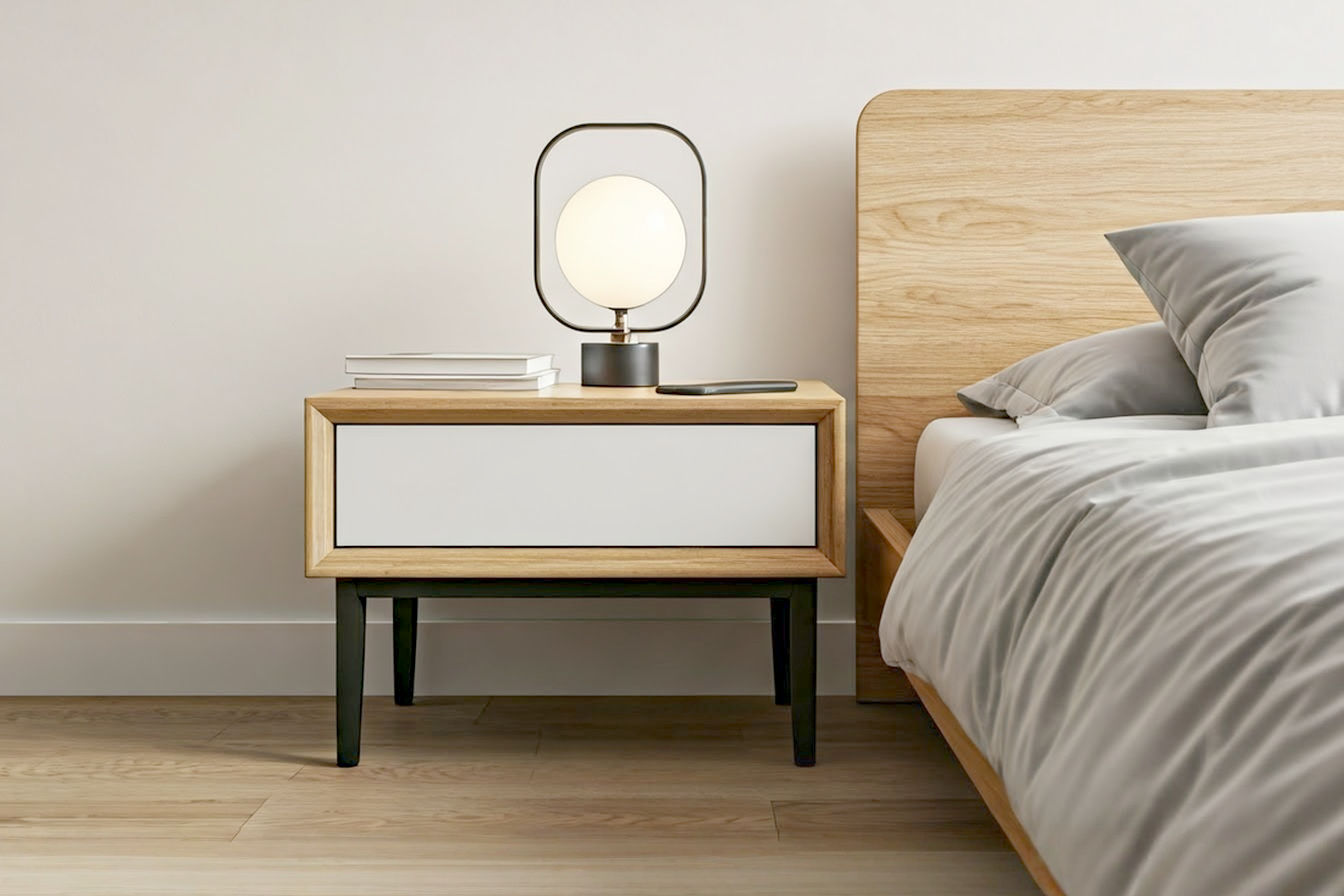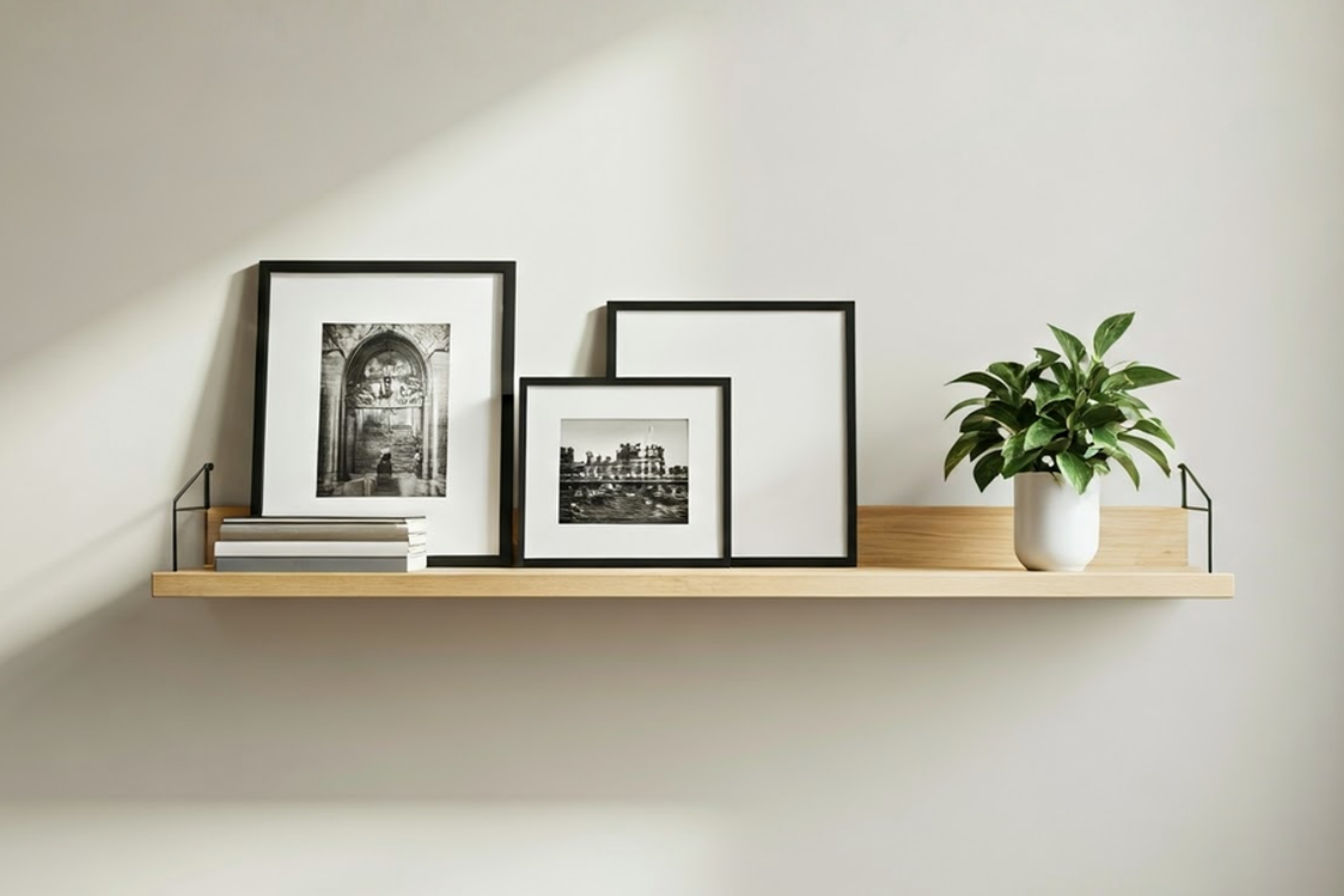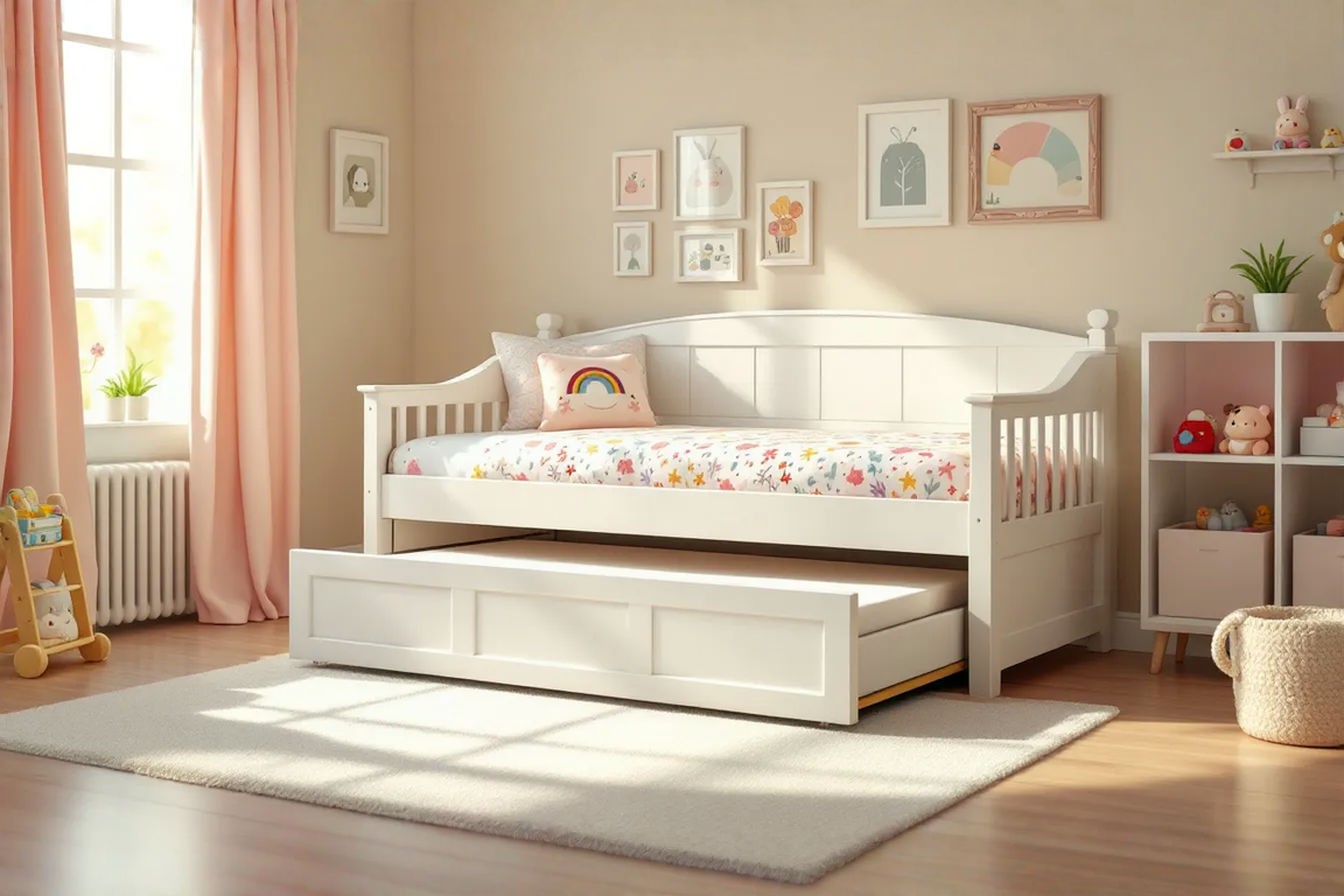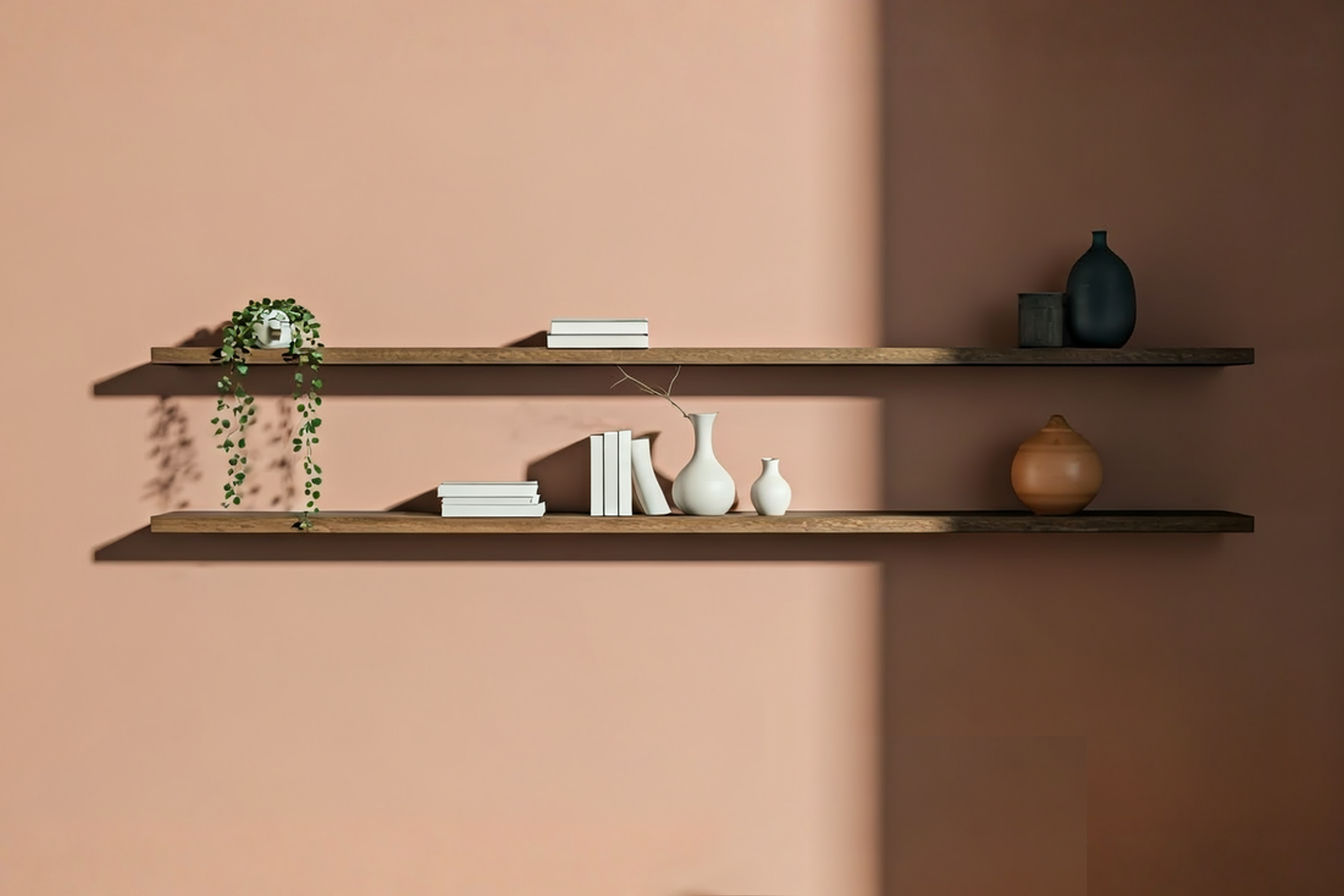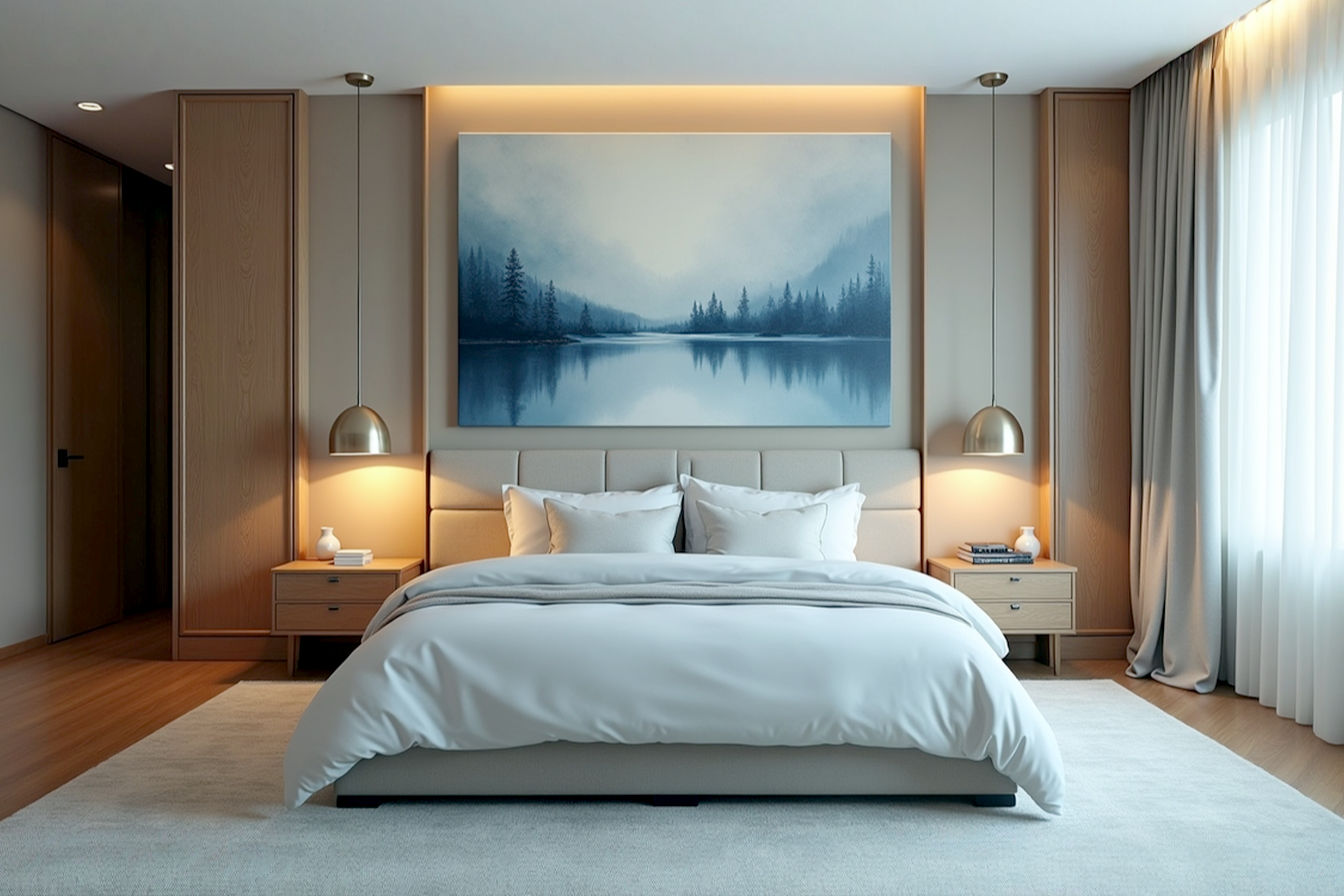7 Iconic Mid Century Nightstands That Define the Style
Uncover the stories behind 7 iconic Mid-Century Modern nightstands. These aren’t just furniture; they’re pieces of design history that can transform your bedroom…
This post may contain affiliate links. If you make a purchase through these links, we may earn a commission at no additional cost to you.
Mid-Century Modern (MCM) design remains incredibly popular today, celebrated for its clean lines, organic shapes, and functional beauty. While furniture pieces like sofas, chairs, and dining tables often grab the spotlight, the humble nightstand plays a crucial role in completing the look of an MCM bedroom. These bedside companions aren’t just practical spots for lamps and books; they’re often miniature works of art that embody the core principles of the era. Let’s explore what makes Mid-Century Modern nightstands so special and delve into seven iconic examples that truly define this enduring style.
Understanding Mid-Century Modern Design
Before we look at specific nightstands, it helps to understand the broader context of Mid-Century Modern design. This style emerged roughly between the 1940s and 1960s, a period marked by post-war optimism, technological advancements, and a desire for a fresh start. Designers of this era sought to break away from ornate, traditional styles and create furniture that was functional, affordable, and visually light.
Key characteristics of MCM design include:
- Clean Lines and Minimalist Forms: Furniture often features straight lines, gentle curves, and a lack of unnecessary ornamentation. The focus is on the shape and structure itself.
- Organic and Geometric Shapes: You’ll see a mix of natural, flowing forms (like boomerang shapes or kidney tables) and strong geometric elements (rectangles, circles).
- Integration of Indoors and Outdoors: Large windows and open floor plans were common in MCM architecture, and furniture often reflected this by using natural materials and having a light, airy feel.
- Emphasis on Functionality: Pieces were designed to be practical and serve a purpose, often incorporating storage solutions or modular elements.
- Use of New Materials: While wood remained popular, designers also embraced new materials like plywood, plastic, fiberglass, and metal, often combining them in innovative ways.
- Iconic Legs: Tapered legs, often angled outwards, are a hallmark of the style, giving pieces a lifted, elegant appearance.
Mid-Century Modern nightstands perfectly encapsulate these principles. They typically feature simple forms, often with one or two drawers or an open shelf, supported by those distinctive tapered legs. Materials are usually high-quality wood, sometimes combined with metal pulls or accents.
The Essential Characteristics of MCM Nightstands
Mid-Century Modern nightstands aren’t just smaller versions of other furniture; they have their own set of defining features that make them instantly recognizable. Understanding these characteristics helps you appreciate the design and identify authentic pieces.
Form and Structure
The shape of an MCM nightstand is usually straightforward and uncluttered. You won’t find excessive carvings or elaborate details. Instead, the design relies on the beauty of the materials and the purity of the form. Many feature a simple box-like structure for storage, often elevated on legs.
- Simplified Silhouettes: Think clean rectangles or squares. Some might have slightly more organic tops or drawer pulls, but the overall shape is streamlined.
- Elevated Design: A defining feature is the use of legs that lift the main body of the nightstand off the floor. This creates a sense of lightness and prevents the piece from feeling heavy or bulky in the bedroom. The legs are typically slender and often taper towards the bottom.
- Integrated Storage: While minimalist, MCM nightstands are also functional. They usually include at least one drawer for keeping essentials out of sight or an open shelf for books and display items. Some might combine both.
Materials
The materials used in Mid-Century Modern furniture are key to its look and feel. Designers of the era favored natural materials, especially wood, but also experimented with newer, man-made options.
- Wood: This is the most common material. Popular choices included walnut, teak, oak, and mahogany. These woods were often chosen for their beautiful grain patterns and durability. Finishes were typically natural or lightly stained to highlight the wood’s inherent beauty.
- Plywood: Molded plywood was a revolutionary material for the era, allowing for curved, organic shapes that were previously difficult to achieve with solid wood. Designers like Charles and Ray Eames famously used molded plywood.
- Metal: Metal was often used for legs, handles, or structural supports. Brass, steel, and iron were common, often finished in black or brushed metal tones.
- Glass: Sometimes used for tabletops or shelves, glass added a touch of lightness and modernity.
- Laminates and Plastics: While less common in higher-end pieces, some more affordable MCM furniture used laminates or early plastics, often in vibrant colors.
The combination of these materials, particularly the pairing of warm wood tones with cool metal accents, is characteristic of the style.
Functionality
MCM design prioritized function alongside form. Nightstands were designed to be practical bedside companions.
- Storage: Drawers and shelves provide essential storage for books, glasses, remotes, and other items you need close at hand at night. The simplicity of the storage solutions reflects the minimalist aesthetic.
- Surface Area: A flat top surface is essential for holding a lamp, alarm clock, or a glass of water. The size of the nightstand top is usually proportional to the piece, offering enough space without being overly large.
- Durability: MCM furniture was generally well-made, designed to last. The construction methods, often involving solid wood joinery and sturdy hardware, contributed to their longevity.
Understanding these core characteristics helps set the stage for appreciating the iconic pieces that follow. Each of these nightstands, while sharing the MCM DNA, has unique elements that make it stand out.
Seven Iconic Mid-Century Modern Nightstands
Identifying just seven “iconic” MCM nightstands can be subjective, as many designers and manufacturers produced beautiful and influential pieces during this period. However, certain designs have achieved widespread recognition and continue to be highly sought after, embodying the best of the style. Here are seven examples that have left a lasting impact:
1. The Herman Miller Nelson Basic Cabinet Series
Designed by George Nelson for Herman Miller, the Basic Cabinet Series, including its nightstand variations, is a cornerstone of Mid-Century Modern design. Introduced in the late 1940s, this modular system allowed users to configure different cabinet units, including bedside tables, to suit their needs.
- Key Features: These nightstands are characterized by their simple, rectangular forms, often featuring a single drawer or a combination of a drawer and an open compartment. They typically sit on a minimalist base, sometimes a plinth or simple legs. A notable feature is the variety of door and drawer pull options, from simple circular knobs to more distinctive metal pulls.
- Materials: Primarily constructed from wood, including walnut, oak, and birch. Some variations included laminate tops for added durability. The hardware was often metal.
- Historical Context: The Basic Cabinet Series was revolutionary for its modularity, reflecting a growing interest in flexible furniture solutions for modern living. It was designed to be functional and adaptable, fitting into various room layouts.
- Why It’s Iconic: Its enduring popularity lies in its timeless simplicity and versatility. The clean lines and quality construction make it a piece that seamlessly integrates into many different decor styles, not just MCM. It represents the core MCM principle of functional design. The technical aspect of its modularity was a significant innovation at the time, allowing for mass production of interchangeable components that users could assemble in various configurations, a concept that influenced future furniture design.
2. The Lane Acclaim Nightstand
Lane Furniture was a major player in the American Mid-Century Modern market, and their Acclaim collection, introduced in the early 1960s, is one of their most recognizable lines. The Acclaim nightstand is a standout piece from this collection.
- Key Features: The defining feature of the Acclaim line, and its nightstand, is the distinctive dovetail joint design visible on the top surface. This decorative and structural element, contrasting lighter maple with darker walnut, creates a striking visual pattern. The nightstand typically has one or two drawers and stands on tapered legs.
- Materials: Constructed primarily from walnut and maple. The contrasting wood tones of the dovetail inlay are central to its aesthetic. Hardware is usually simple brass or wood pulls.
- Historical Context: The Acclaim collection was incredibly popular in its time, representing a more accessible entry point into MCM design for many American households. The visible joinery was a clever way to add visual interest and highlight the craftsmanship.
- Why It’s Iconic: The unmistakable dovetail pattern makes the Lane Acclaim nightstand instantly identifiable. It’s a perfect example of how MCM designers incorporated structural elements into the aesthetic design. The technical detail of the exposed dovetail joint isn’t just decorative; it’s a strong woodworking joint that speaks to the quality of construction, a traditional technique applied in a modern context.
3. The Broyhill Brasilia Nightstand
The Brasilia collection by Broyhill Furniture, launched in the early 1960s, is another iconic American MCM line, heavily influenced by the architecture of the newly built Brazilian capital, Brasília. The nightstand from this collection is particularly distinctive.
- Key Features: The most striking feature is the sculptural, wave-like crest that adorns the drawer fronts or the top edge. This abstract, organic shape is directly inspired by the architecture of Oscar Niemeyer in Brasília. The nightstands typically have one or two drawers and stand on tapered legs.
- Materials: Primarily made from walnut, known for its rich color and grain. The sculptural elements were often solid wood or molded wood components. Hardware was usually brass.
- Historical Context: The Brasilia collection was a bold design statement, bringing a sense of international modernism to American homes. Its distinctive style set it apart from other furniture lines of the era.
- Why It’s Iconic: The unique, flowing “Brasilia wave” motif makes this nightstand instantly recognizable and highly collectible. It’s a clear example of how MCM design drew inspiration from architecture and art. The technical challenge involved in creating the curved, sculptural wood elements was significant, requiring skilled woodworking and potentially steam-bending techniques to achieve the desired organic forms.
4. The Knoll Florence Knoll Nightstand
Florence Knoll Bassett was a pivotal figure in bringing modern design to corporate and residential interiors through Knoll Associates. While known for her minimalist sofas and tables, her approach to integrated interiors included simple, functional case goods like nightstands.
- Key Features: Knoll’s nightstands, often part of larger modular systems, are characterized by their extreme simplicity and clean, rectilinear forms. They typically feature one or two drawers with minimalist pulls or integrated finger pulls. They often sit on a simple metal or wood base, sometimes a plinth or thin legs. The focus is on proportion and understated elegance.
- Materials: High-quality wood veneers like walnut or teak were common, often combined with steel or aluminum bases and hardware.
- Historical Context: Florence Knoll’s work emphasized the importance of well-designed, functional furniture for both homes and offices. Her designs were part of a larger vision for integrated, modern living spaces.
- Why It’s Iconic: The Florence Knoll nightstand embodies minimalist MCM design at its finest. Its timeless, understated aesthetic makes it incredibly versatile and enduring. It represents a more refined, architectural approach to furniture design. The technical precision in the joinery and the seamless integration of materials like wood and metal are hallmarks of Knoll’s manufacturing quality.
5. The Drexel Declaration Nightstand
Drexel Heritage was another prominent American furniture company that produced notable MCM pieces. Their Declaration collection, designed by Stewart MacDougall and Kenneth Copeland in the late 1950s, is celebrated for its clean lines and distinctive hardware.
- Key Features: Declaration nightstands are known for their simple boxy forms, often with one or two drawers. A signature element of the collection is the white porcelain pulls with a small wood insert, which provide a unique visual contrast against the wood. The nightstands typically stand on tapered legs.
- Materials: Primarily constructed from walnut. The pulls are a combination of porcelain and wood.
- Historical Context: The Declaration collection was designed to offer well-made, stylish MCM furniture to a broad market. The distinctive pulls became a recognizable symbol of the collection.
- Why It’s Iconic: The combination of classic walnut construction with the unique porcelain and wood pulls gives the Drexel Declaration nightstand a distinct personality. It’s a great example of how hardware can become a signature design element. The technical process of manufacturing the two-material pulls (porcelain and wood) required specific tooling and assembly techniques to ensure durability and a clean finish.
6. The Kent Coffey Perspecta Nightstand
Kent Coffey produced several popular MCM furniture lines, and Perspecta, introduced in the early 1960s, is one of their most memorable. The Perspecta nightstand is known for its sculptural details.
- Key Features: The most distinctive element is the carved, wave-like or scoop-like drawer pulls or decorative elements on the drawer fronts. Similar to Brasilia, this adds an organic, sculptural quality. The nightstands usually have one or two drawers and sit on tapered legs.
- Materials: Typically made from walnut and sometimes pecan. The sculptural pulls are integrated wood elements.
- Historical Context: The Perspecta collection offered a slightly more decorative take on MCM, appealing to consumers who appreciated the clean lines but also wanted unique artistic details.
- Why It’s Iconic: The integrated sculptural wood pulls are the defining feature, giving the Kent Coffey Perspecta nightstand a unique and elegant look. It shows the variety within MCM design, moving slightly beyond pure minimalism while retaining the core principles. The technical skill required for the integrated carved wood pulls was considerable, involving precision routing and shaping of solid wood to create the seamless, flowing forms.
7. The Dunbar Janus Collection Nightstand
Dunbar Furniture was known for its high-quality, often custom, modern furniture, and the Janus collection, designed by Edward Wormley, is a prime example. The Janus nightstands, like other pieces in the collection, often feature luxurious materials and refined details.
- Key Features: Janus nightstands can vary, but often feature clean lines, high-quality wood, and sometimes subtle details like brass accents or distinctive bases. They might have drawers or open compartments. The emphasis is on craftsmanship and sophisticated materials.
- Materials: Often used premium woods like walnut or mahogany, sometimes combined with metal or stone elements.
- Historical Context: Edward Wormley’s designs for Dunbar bridged the gap between traditional craftsmanship and modern aesthetics. The Janus collection represented a more upscale, luxurious side of MCM.
- Why It’s Iconic: The Dunbar Janus nightstand, while perhaps less instantly recognizable by a single feature than some others, is iconic for its representation of high-end, quality-focused MCM design. It embodies the sophisticated and enduring nature of the style when executed with premium materials and craftsmanship. The technical excellence in the construction and finishing of Dunbar pieces, often involving hand-craftsmanship and meticulous attention to detail, set them apart in the market.
Identifying Authentic Mid-Century Modern Nightstands
With the popularity of MCM furniture, reproductions and inspired-by pieces are common. If you’re looking for an authentic vintage nightstand, here’s what to consider:
- Look for Maker’s Marks: Many reputable manufacturers like Herman Miller, Lane, Broyhill, Drexel, and Kent Coffey included stamps, labels, or tags with their name and sometimes the collection name. Check the inside of drawers, the back of the piece, or the underside.
- Examine the Construction: Authentic MCM furniture often features quality construction techniques like dovetail joints (like on the Lane Acclaim), solid wood frames, and sturdy hardware. Look for signs of craftsmanship rather than staples or particleboard (though some lower-end vintage pieces did use less durable materials).
- Inspect the Materials: Familiarize yourself with the woods and finishes commonly used. Walnut, teak, and oak with natural or light stains are good signs. Be wary of pieces made from materials not typical of the era or with overly glossy or artificial-looking finishes.
- Hardware Details: Pay attention to the drawer pulls and hinges. Are they consistent with the style and materials used by the manufacturer? Reproductions might use modern hardware.
- Research the Design: If you think you’ve found a specific iconic piece, research its known characteristics, dimensions, and variations. Compare the piece you’re looking at to verified examples.
- Patina: Vintage furniture will show some signs of age and use, known as patina. This can include minor scratches, fading, or wear. While significant damage is a red flag, a little patina can be a sign of authenticity. Too-perfect condition might suggest a newer piece or a heavily refinished one.
Identifying authentic pieces requires a bit of research and a keen eye, but finding a genuine vintage MCM nightstand can be a rewarding experience.
Integrating Mid-Century Modern Nightstands into Modern Decor
One of the reasons MCM furniture remains so popular is its ability to blend seamlessly with various interior design styles, not just pure MCM. Here’s how you can integrate an iconic MCM nightstand into your bedroom today:
- Mix and Match: Don’t feel pressured to have an entire MCM bedroom set. A single iconic nightstand can add a touch of vintage charm and character to a contemporary or even traditional space. Pair a walnut MCM nightstand with a modern upholstered bed or a classic metal frame.
- Contrast Materials: The warm wood tones of many MCM nightstands provide a beautiful contrast to cooler materials like metal, glass, or concrete often found in modern interiors.
- Focus on Scale and Proportion: Ensure the size of the nightstand is appropriate for your bed and the overall scale of the room. An MCM nightstand’s typically clean lines and elevated form prevent it from feeling too heavy, even in smaller spaces.
- Accessorize Thoughtfully: Top your MCM nightstand with accessories that complement the style. A vintage-inspired lamp with a simple shade, a few classic books, a small plant, or a minimalist clock can enhance the look. Avoid clutter.
- Color Palette: MCM nightstands work well with a variety of color palettes. They look fantastic against walls painted in popular MCM colors like olive green, teal, mustard yellow, or orange, but they also provide warmth and texture in neutral or monochromatic rooms.
- Let It Be a Statement Piece: If you have a particularly unique or iconic MCM nightstand, allow it to stand out. Keep the surrounding elements relatively simple so the nightstand can be a focal point.
An MCM nightstand isn’t just a place to put your phone at night; it’s a design element that can elevate your entire bedroom aesthetic, adding history, style, and quality craftsmanship.
Where to Find Iconic MCM Nightstands
If you’re inspired to find one of these iconic nightstands (or another equally stunning MCM piece), here are some places to look:
- Vintage Furniture Stores and Antiques Shops: These are great places to find authentic, pre-owned pieces. Selection varies, so regular visits are often necessary.
- Online Marketplaces: Websites like eBay, Etsy, and specialized vintage furniture sites often have a wide selection of MCM pieces from sellers around the world. Be sure to check seller reviews and ask for detailed photos and condition reports.
- Auctions: Local and online auctions can be sources for vintage furniture, sometimes at competitive prices.
- Estate Sales: Estate sales can sometimes yield hidden gems, including MCM furniture.
- Specialized MCM Dealers: There are dealers who specialize specifically in Mid-Century Modern furniture. They often have curated collections of high-quality, authenticated pieces, though prices may be higher.
- Reproductions: Many furniture companies today produce reproductions or inspired-by versions of classic MCM designs. While not vintage, these can be a good option if you want the look and feel of the style with the convenience of buying new. Look for companies known for quality reproductions.
Finding the perfect iconic MCM nightstand might take time and patience, but the search is part of the fun. Each piece has a history and can bring a unique story into your home.
Conclusion
Mid-Century Modern nightstands are far more than just functional bedroom furniture. They are small but significant examples of a design movement that prioritized clean lines, innovative materials, and functional beauty. Iconic pieces like those from Herman Miller, Lane, Broyhill, Knoll, Drexel, Kent Coffey, and Dunbar showcase the variety and enduring appeal of the style. Whether you’re a dedicated MCM enthusiast or simply looking to add a touch of classic design to your space, an iconic Mid-Century Modern nightstand is a choice that brings both style and history to your bedside. Their timeless appeal ensures they remain relevant and desirable in contemporary interiors, proving that good design truly lasts.

